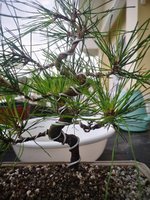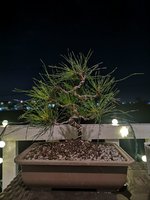michang05
Seedling
Hi All,
I've recently acquired two JBP and I'm currently in the Philippines, (I got this from a nursery and the picture below was an import from Japan and was said to be grown from its pot ~15yrs). I noticed the base trunk seems small and formed a reverse taper, I've watched several videos and was told about sacrifice branches but i do think the branch is too high from the base that it might not help the lowest trunk to get thicker.
I also heard scarring the base trunk might do the trick but a bit skeptical as I do not want to make any actions that might stress/kill the tree.
Any help would be appreciated, thanks.
*I have a lot of questions in any information about growing pine in a tropical country like here in the Philippines as well.

I've recently acquired two JBP and I'm currently in the Philippines, (I got this from a nursery and the picture below was an import from Japan and was said to be grown from its pot ~15yrs). I noticed the base trunk seems small and formed a reverse taper, I've watched several videos and was told about sacrifice branches but i do think the branch is too high from the base that it might not help the lowest trunk to get thicker.
I also heard scarring the base trunk might do the trick but a bit skeptical as I do not want to make any actions that might stress/kill the tree.
Any help would be appreciated, thanks.
*I have a lot of questions in any information about growing pine in a tropical country like here in the Philippines as well.


